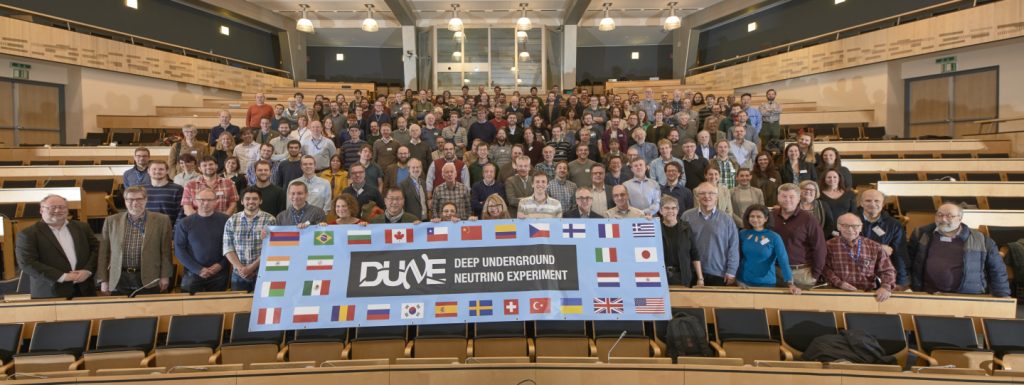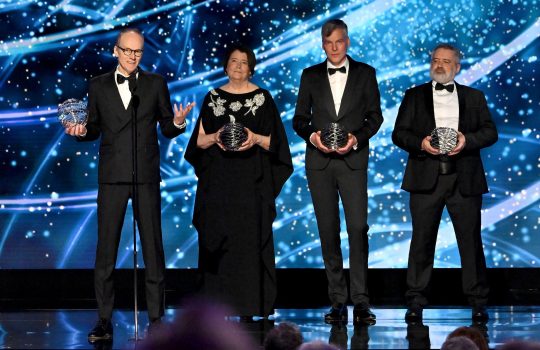At the Deep Underground Neutrino Experiment collaboration meeting in January, held at CERN, DUNE co-spokesperson Mark Thomson from the University of Cambridge presented DUNE collaborators with a long list of accomplishments. Beautiful pictures showed the progress that DUNE has made on the installation of cryostats and detector components for prototype detectors, called the ProtoDUNE detectors, which are housed in a large facility at CERN. He also recognized the “vast amount of progress” made with regard to the planning of the massive DUNE far detectors, to be installed at the Sanford Underground Research Facility in South Dakota.
Thomson congratulated CERN and the ProtoDUNE team for their work, while in the same breath reminding the audience of the work ahead to complete the prototype detectors and prepare for data taking this fall using a beam from the CERN accelerator complex.
“We need to maintain this impressive momentum,” he said. “We need to continue to confound expectations.”
The DUNE collaboration continues to grow. In the past 12 months more than a dozen institutions and about 150 scientists have joined the collaboration, which now comprises 1,075 members from 175 institutions in 31 countries.
A large portion of the collaboration meeting was devoted to the planning of the DUNE Technical Design Report, which will document the technical specifications of all detector components. The Far Detector TDR is to be submitted to the Long-Baseline Neutrino Committee in April 2019. It will serve as the foundation for receiving final construction approval for the detectors.
According to DUNE co-spokesperson Ed Blucher from the University of Chicago, the meeting had the largest attendance of any DUNE collaboration meeting so far: 275 attendees and around 200 talks presented.




